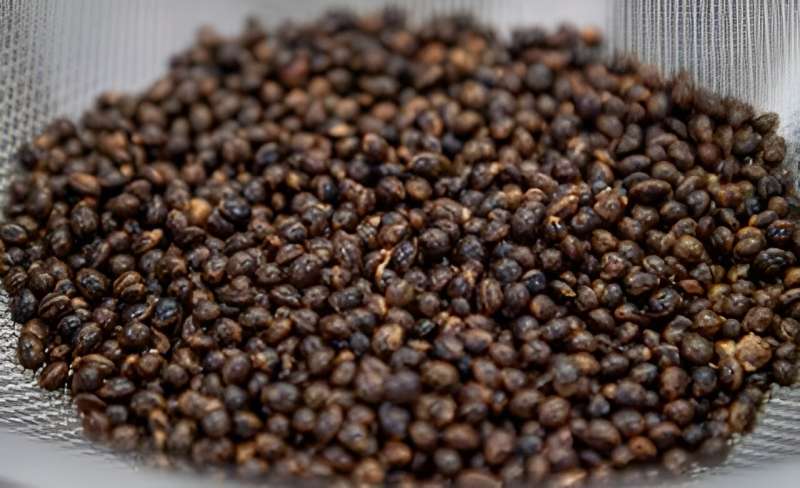This article has been reviewed according to Science X's editorial process and policies. Editors have highlighted the following attributes while ensuring the content's credibility:
fact-checked
peer-reviewed publication
trusted source
proofread
Research reveals nutrition potential of budding bush food

A bush food staple could be the center of a new Indigenous industry, according to a University of Queensland researcher. Sera Susan Jacob from the ARC Centre for Uniquely Australian Foods has identified the properties and potential of wattleseed, an edible seed or legume from the Australian Acacia, used traditionally as a staple food.
The findings are published in the Journal of Food Science.
"Wattleseed has an incredible nutritional profile that is very different from traditionally known legumes, which creates an interesting market," Mrs. Jacob said.
"The legume is currently used as a flavoring ingredient because of its taste and aroma, but my studies show there are different ways to take advantage of its nutritional properties by using it as a major ingredient. Most existing consumer products only use one variety of wattleseed, A.victoriae, when there are many others to consider.
"Wattleseed has similar protein content to other legumes but is very high in fiber and low in starch. It also contains compounds with a lot of anti-inflammatory and anti-carcinogenic benefits, which are important to today's consumers."
As part of her Ph.D. research, Mrs. Jacob worked with Northern Territory industry partners Karen Sheldon Group and Kungkas Can Cook to create recipes that contain more than 20% wattleseed, compared with the 3% found in most existing commercial products.
The recipes included a curry-style savory dish and a muesli bar to appeal to consumers in regional and remote northern Australia, and a gluten-free vegan burger patty for the wider market.
Karen Sheldon Group Director Sarah Hickey said the recipes meet the recommended daily intake of iron, vitamin C and fiber in a child's diet—components lacking in the diet of those with limited access to affordable, nutritious food.
"There is definitely a market for products that showcase wattleseed as they taste great and are packed with nutritional value," Mrs. Hickey said.
"Our objective is to ensure Indigenous Australians are involved in every stage of supply and that any value-add products are made where they're wild harvested. Our intent is to close the circle of supply, so the seeds harvested on country also end up on the plates of those living on country, improving their diets along with their economic prospects. It's about honoring and respecting Indigenous Australians who have taken such great care of these foods for more than 60,000 years so we can all continue to enjoy them."
Mrs. Jacob said there were ample opportunities for the use of wattleseed, with more than 20 different species documented by Indigenous communities.
"The combination of scientific evidence and Indigenous knowledge is a powerful tool that community can use to successfully market and position their products and the formulations we've developed," she said.
Educational materials from the research findings will also be created to be used in remote schools and community stores to pass on Indigenous knowledge and science.
More information: Sera Susan Jacob et al, Bringing back a forgotten legume—Sensory profiles of Australian native wattleseeds reveal potential for novel food applications, Journal of Food Science (2023). DOI: 10.1111/1750-3841.16860




















